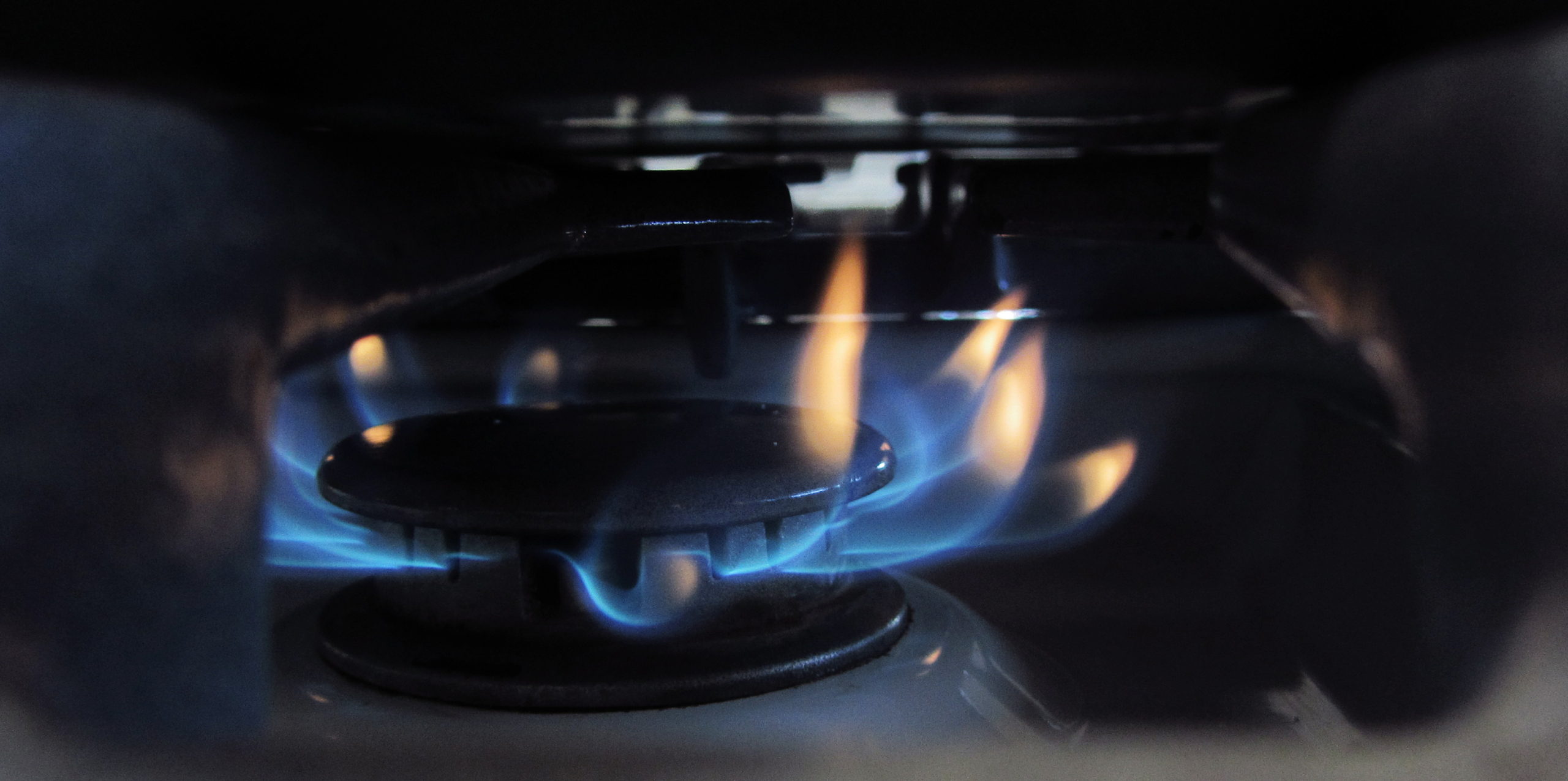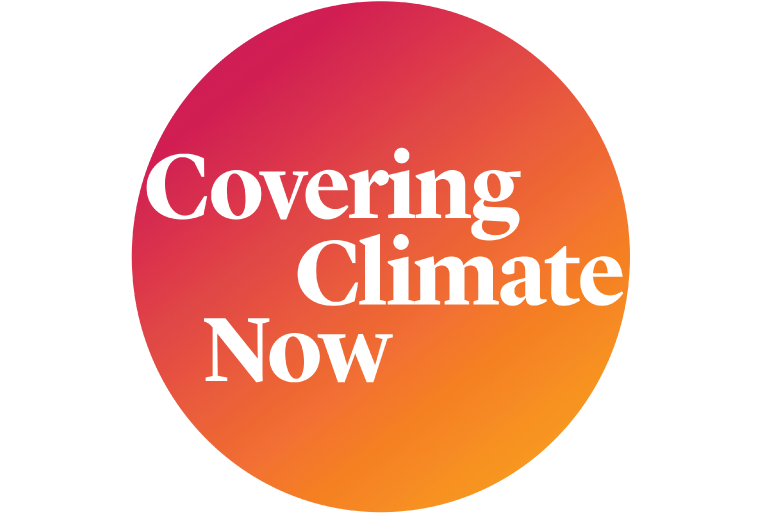EACH MONTH, Covering Climate Now speaks with different journalists about their experiences on the climate beat and ideas for pushing our craft forward. This week, we spoke with Rebecca Leber, a senior reporter at Vox who previously covered climate change and the environment for Mother Jones, Grist, and The New Republic. We talked about the personal dimensions of the energy transition, the recent gas-stove brouhaha, and stories to watch amid the rollout of the Inflation Reduction Act. The conversation, with CCNow deputy director Andrew McCormick, has been edited for length and clarity. Follow Leber on Twitter.

Your work often focuses on the at-home experience of energy and climate change, which a recent piece of yours called “the next frontier.” Why is this an effective entry point for the climate story?
It’s important to meet audiences where they are, which often is in the home. Climate change is very abstract to some people, so when we look at the issue through the lens of things people interact with every day—something extremely familiar, like an appliance—we can speak to a wide audience, not just people who already care about climate change.
That’s not to say climate change is any one individual’s problem to solve. That’s how fossil fuel interests have long framed it—as a problem that should be left to the individual, as opposed to one for governments and corporations. But consumer behavior does help us illustrate how deeply ingrained fossil fuels are in our daily lives and the economy as a whole. When I first started reporting about gas stoves, for example, I heard from readers who had never made the connection that what they were burning in their kitchens was a fossil fuel. That’s the kind of disconnect that I’m hoping to correct.
In recent years especially, you’ve written a lot about gas stoves. How did this become such an area of interest for you?
I’ve been covering climate change for over a decade, and occasionally I go through cycles of burnout and feeling disillusioned by how repetitive and depressing the climate story can be. Every summer, like clockwork, for example, we know there are going to be horrible disasters and journalists will report that they’re getting worse and worse and affecting more people.
Early 2020 was one of these times for me. As everything was shutting down due to the pandemic, I was struggling with what climate reporting’s place would be in this chaotic new world. In response, my editors at Mother Jones at the time, Kiera Butler and Marianne Szegedy-Maszak, encouraged me to focus on whatever aspect of the climate story I found interesting. That gave me space and freedom to go down some rabbit holes that otherwise I might not have. Specifically, a source mentioned to me around that time that the natural gas industry was paying influencers to promote gas stoves online. Right away, I had so many questions. Gas stoves are not a major profit center for the industry, so why was this appliance so valuable to them?
I learned that the fossil fuel industry has spent nearly a century building up this mythology around gas stoves as, supposedly, a superior product to electric stoves and a superior way to cook. In the 1930s, the industry invented the expression “cooking with gas”—to mean, like, “You’re really going for it” or “You’re really excelling in the kitchen”—that’s been used for decades. [Don’t miss the truly painful 1980s “Cookin’ with gas” rap, by the National Fuel Gas Distribution Company.] Over time, the gas stove became a cultural touchstone. Most consumers probably don’t care what energy source is used to heat their homes, as long as they’re warm, but when it comes to the stove they have this emotional connection; for some people, a gas stove is a status symbol.
Today, this is incredibly useful for the fossil fuel industry, because the industry can leverage that emotion to push back against climate action and efforts to move our homes away from fossil fuels. Just look at the outrage that the recent debate around gas stoves generated.
Given the time you’ve spent on the gas stove beat, did the recent blowup surprise you?
Because of all the industry maneuvering and marketing, I think, the stage was set for this to become a major story. The extreme freak did catch me a bit off guard, though. What spurred it wasn’t based in reality. In December, the Consumer Product Safety Commission said it was looking into the health risks of gas stoves. Then, in January, a CPSC commissioner said to Bloomberg, “Any [regulatory] option is on the table.” This triggered a lot of fake indignation from the GOP, whose members claimed that the Biden administration wanted to ban gas stoves and somehow take people’s stoves away. The fact is, a ban was never under consideration, and there’s a great deal else the CPSC can do to address health concerns, such as improving consumer awareness and industry standards.
Once the story did blow up, I wasn’t surprised that it stayed in the news cycle. For many people, I think it was their first time encountering the idea that gas stoves create pollution in the home and that combusting gas indoors can have significant health consequences.
How would you evaluate the media’s “gas stove controversy” coverage? Was there anything you found particularly effective or lacking?
There’s been a lot of great media coverage that discussed stoves in the context of indoor air quality and climate change. The best coverage has introduced, with nuance, some of the scientific research around these questions—not overstating the impact of gas stoves on climate change, for example, but not glossing over that this is part of the fight to electrify homes.
What’s been disappointing about other coverage is how susceptible some outlets were to powerful interests that were purposefully muddying the waters. Gas utilities and trade groups like the American Gas Association very quickly got out there, working to undermine the scientific research on gas stoves, indoor air quality, and climate change. Some outlets ran with whatever these groups were saying, seemingly without investigating further or questioning why groups like this might be so invested. It felt like a replay of how the media handled climate change for so many years—regardless of the convincing science, a lot of coverage treated this as a partisan question and an extension of the culture wars.
Bigger picture, the climate story often features powerful interests like those you’re describing who seek to confuse the public discourse. What can we do, as journalists, to keep climate stories accessible and help audiences navigate various conflicting narratives?
For one thing, I try to always approach stories with a fresh eye. I want to avoid jargon and assumptions about what the audience already knows or doesn’t. Recently, I was working on a story about heat pumps, for example, and I was going to write for the millionth time that heat pumps are more efficient than gas furnaces. But I took a step back and asked myself, “Well, do people really know why they’re more efficient?” That’s something I was almost taking for granted, but I realized that I’m not helping readers understand what’s going on if I don’t include why in the story.
As far as combating misinformation and disinformation goes, I always try to think through sources’ potential motives, especially when I’m hearing from industry sources. I also take a wide approach to sourcing. Often in journalism, presenting “differing viewpoints” results in false equivalence. Instead, I try to take a long view—to speak with both people who are actively at the forefront of an issue and those with historical perspective—and people working at different levels of expertise. When I was looking into gas stoves earlier this year, for example, I was shocked to learn that there was a period in the 1980s when questions about the health and safety of gas stoves broke through in the national discourse, with a lot of debate back then rooted in the same talking points we’re hearing today. So there’s clear value, for example, in hearing from researchers who’ve been working on this issue for a long time and are frustrated at how little attention it’s gotten over the past few decades. And lately, as I’ve been reporting on provisions of the Inflation Reduction Act, rather than just talking to science and policy experts, I’ve tried to seek out contractors, for example, who will be installing heat pumps in people’s homes.
Much of the IRA story is set to play out at the individual level, with various tax incentives and rebates in the bill intended to encourage clean-energy adoption in the home. What parts of this story will you be keeping a close eye on?
The IRA’s consumer incentives will be a big part of its legacy, because those tax breaks and rebates are how most Americans—how most voters in the next election—are going to encounter the bill. This is a massive law, with many decentralized components; state governments will often matter as much as the White House in implementing some of these rebates and making information clear and accessible to people. And in the early stages of the bill’s rollout—think back to the early days of the Affordable Care Act—there will likely be some bumps in the road. Journalists will have an important role to play in helping audiences sort through the confusion.
There’s a lot of public interest in heat pumps right now, particularly given rising energy prices over the past year. But there’s a lot of confusion, too, about how heat pumps work. In some parts of the country, there are fewer contractors than in others who have experience with them; if people have trouble finding contractors and electricians who can install heat pumps, that’s obviously going to influence their viability. Communication between heat pump manufacturers and retailers is also a factor. Some Americans’ first encounter with a heat pump will be at a Home Depot, for example, and the knowledge of the salesperson they talk to will shape what they think about the technology.
I’m also very interested in provisions of the law focused on electrifying school buses, which doesn’t get enough attention. Diesel fuel emissions can be very harmful for people’s health—kids line up next to these buses—and the environment. There isn’t enough money in the bill to electrify all school buses in the country, but there’s enough to make a difference, and this is an area where we could see communities benefiting from the IRA pretty quickly.
Utility companies will also have a big role in local energy transition outcomes. How would you like to see journalists covering those in the coming years?
Utilities are a hard one, because they vary so widely between regions. Some utility companies have invested a lot in clean energy, while others are still strong proponents of fossil fuels. For a long time, the gas industry’s narrative has been that gas is a cleaner “bridge fuel” to help get us off coal. Broadly speaking I think we’re starting to move past that idea. Still, utilities have a ton of political influence, and there are a lot of false assumptions out there about what makes an energy grid safe and reliable. How utilities are shaping public policy is a substantive area for reporters across the country to dig into.
Considering our discourse’s propensity to veer into hyperpartisanship, what would you say to journalists worried that wading into the energy and climate stories could make them appear partisan to their audiences?
It’s not right that these are partisan issues at all. Clean energy is not about blue versus red, and in fact, when you look at where wind and solar energy are taking off, it’s often in red states. Further, many economic benefits of the IRA are going to be felt the most in rural, more conservative areas. As more people grow familiar with what the energy transition actually looks like—at the personal level, it will often look like a heat pump—I think we’ll stop trying to see this story through a partisan lens.




